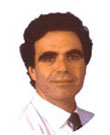Lance Armstrong, seven-time winner of the Tour de France is on a warpath against cancer with his 5th Livestrong Day, http://blogs.wsj.com/health/?s=armstrong&x=0&y=0. He is doing a yeoman's job in fighting cancer, but he could do a lot more relatively easily by leveraging his access to the media to publicize how cigarettes are the leading cause of cancer by far, and by putting pressure on the tobacco companies to stop all marketing of their deadly products. In Lance's editorial in the Wall Street Journal, http://online.wsj.com/article/SB121063754261486825.html?mod=WSJBlog, he states that the public should "Ask your local, state and national lawmakers what steps they'll take against tobacco, the number one cause of cancer..." Unfortunately, the public has insufficient clout with legislators to enact changes, and more importantly the public does not have the media access that Lance has, as witnessed by his ability to author an editorial in the Journal. Imagine how effective Lance could be if he appeared on Oprah, Letterman, Leno, Larry King, etc., spoke out against tobacco companies, and put pressure on legislators to ban all tobacco advertising. The US government in its NIH web site, http://consensus.nih.gov/2006/TobaccoStatementFinal090506.pdf , (page 7) states that “Tobacco use is the leading preventable cause of premature death in the United States. Each year, more than 440,000 Americans die of tobacco-related disease, accounting for 1 in every 5 deaths. Cigarette smoking is responsible for more than 30 percent of cancer deaths annually in the United States. Smoking also contributes substantially to deaths from heart disease, stroke, and chronic obstructive pulmonary disease... From 1995 to 1999, estimated annual smoking-attributable economic costs in the United States were $75.5 billion for direct medical care for adults and $81.9 billion for lost productivity." According to the US federal Trade Commission, http://www.ftc.gov/opa/2007/04/cigaretterpt.shtm, tobacco "Advertising and promotional expenditures… (were) $15.15 billion in 2003… $14.15 billion in 2004, and… $13.11 billion in 2005." In contrast, according to the National Cancer Institute, http://www.cancer.gov/cancertopics/factsheet/NCI/research-funding, “the Nation’s principal agency for cancer research… The NCI’s total budget for Fiscal Year 2005 was $4.83 billion. The NCI will invest an estimated $4.79 billion during Fiscal Year 2006. The budget is expected to decrease to $4.75 billion in Fiscal Year 2007.” The tobacco companies are therefore spending three times as much on tobacco advertising than the government spends on cancer research. Additionally, tobacco companies have so far donated $2.5 million to federal candidates and parties for the 2008 election. Go to http://www.opensecrets.org/industries/contrib.php?ind=A02&cycle=2008 for donation details by company and politician. It’s no wonder that we’re losing the war on cancer. Lance is one of the few people that can single-handedly end the insanity. Doing that would be a greater accomplishment than winning the Tour seven more times!
Robert Cykiert, M.D.
WhatDoctorsThink.com
May 16, 2008